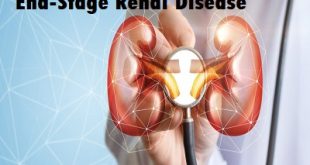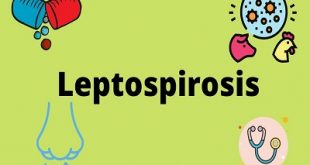Definition
Endocarditis is an infection of the inner lining of the heart and its valves. The infection is caused by bacteria or fungi that enter the bloodstream through the mucous membranes of the mouth, open wounds, needles. It can also occur from medical procedures which involve cutting through infected skin.
Normally, bacteria which enter the bloodstream pass harmlessly through the heart and are killed by the immune system. However, bacteria circulating through the bloodstream may attach to heart tissue that is already damaged by heart disease or to an artificial heart valve. When this happens, the bacteria can hide from the immune system and cause a dangerous infection.
Endocarditis can lead to other life-threatening conditions. Stroke or reduced blood flow to other organs can occur when clumps of bacteria break off from the heart and block the blood vessels. The bacteria which cause endocarditis can also spread to other organs, causing additional tissue damage. Uncontrolled endocarditis can permanently damage the heart valves, eventually leading to heart failure.
Epidemiology
Infective endocarditis is a rare disease, with an incidence of two to six episodes per 100,000 habitants/year. Incidence is higher in elderly people; besides, this group is often affected by much comorbidity. There is a clear and observable change in the spectrum of heart diseases predisposing to infective endocarditis in the last decades. Up to one-third of the patients acquire the disease on a health-care-associated environment. Despite advances in health-care logistics, infective endocarditis remains a big concern especially in low-income countries, where the main cause of infection is rheumatic fever. In-hospital mortality persists relatively high despite development in medical and surgical treatment. Patients with infective endocarditis need rapid response and prompt diagnosis from a multidisciplinary group including cardiologists, surgeons, infectologists, and radiologists.
Types of Endocarditis
Infectious (bacterial) endocarditis: This type of endocarditis is characterized by an infection caused by bacteria or fungi that enter the bloodstream and settle in the heart lining, a heart valve or a blood vessel. This type of endocarditis is uncommon, but people with some heart conditions have a greater risk of developing it.
Non-infectious (non-bacterial) endocarditis: This type of endocarditis is characterized by various kinds of illnesses affecting the heart valves, most often the left side of the heart. The disease may be the first step in development of infectious endocarditis.
Endocarditis risk factors
Your risk is higher if you have a problem that affects blood flow through your heart. That’s because a blood flow problem makes it more likely that bacteria or fungi will attach to heart tissue. Some other things raise your risk too, because they can let bacteria or fungi enter your bloodstream.
You have a higher risk of endocarditis if you have:
- Had endocarditis in the past.
- An implanted heart device such as a pacemaker or implantable cardioverter-defibrillator (ICD).
- A hemodialysis access or a central venous catheter.
- Abnormal or damaged heart valves or an artificial heart valve.
- A congenital heart defect.
- Injected illegal drugs using dirty needles or without cleaning the skin.
Not all heart problems put you at higher risk for endocarditis. You do not have a higher risk if you have had:
- Bypass surgery for heart disease.
- Rheumatic fever without heart valve damage.
- A heart attack without other complications.
- Mitral valve prolapse without regurgitation or unusually thickened valve leaflets.
- A coronary artery stent.
Causes of Endocarditis
Endocarditis occurs when germs enter the bloodstream and reach the heart, multiplying and attaching to atypical heart valves or damaged heart tissue. Overgrown bacteria are the most common cause of endocarditis, although fungi and other microorganisms can sometimes be responsible for the condition. The immune system usually destroys harmful bacteria that makes it into the bloodstream, but sometimes bacteria makes it through the bloodstream and into the heart. Normal heart valves are resistant to infection, but diseased, damaged, or prosthetic heart valves are more prone to bacteria which forms endocarditis.
Bacteria and germs enter the bloodstream in several predictable ways. The following are common endocarditis causes:
- Injury to the mouth, gums or skin.
- Regular teeth brushing.
- Flossing the teeth.
- Gum disease (also known as Gingivitis).
- Certain dental procedures (such as tooth extraction that involve cutting the gums).
- Skin sores, abrasions or openings.
- Sexually transmitted diseases (STDs).
- Catheters (usually longer-term use).
- Certain intestinal disorders (including inflammatory bowel disease).
- Needles when getting tattoos.
- Needles when getting body piercings.
- Illegal intravenous (IV) drug injection (especially with used or unclean needles).
If enough bacteria enter the bloodstream, or if aggressive bacteria enter the bloodstream, endocarditis can develop even on healthy heart valves.
Endocarditis symptoms
The usual signs of endocarditis are prolonged fever for several days (occasionally up to 30 days) in a child with congenital heart disease that occurs after a procedure in the mouth, intestinal tract or urinary tract. However, the infection may occur without a previous procedure.
Symptoms of endocarditis may develop slowly or come on suddenly. They include:
- Fatigue
- Fever
- Headache
- Joint inflammation or pain
- Night sweats
- Poor appetite and/or weight loss
- Rash
More severe symptoms include:
- Anemia
- An enlarged spleen
- Bleeding that causes small dark lines under the fingernails or small dark spots on the skin
- New heart murmurs
Endocarditis complications
Complications of bacterial endocarditis include:
- Heart failure
- Blood clots or clumps of bacteria travel to other parts of the body (emboli). This might travel to the arteries in the heart, brain, spleen, bowel, arms, or legs.
- Infection in other parts of the heart
- Weakened blood vessel (aneurysm), such as in the brain
- Kidney injury or disease
- Death
Diagnosis and test
If your doctor suspects endocarditis because of your medical history and symptoms, you will undergo a series of tests. These may include:
Physical Exam
A health care provider will listen to your heart to check for abnormal heart sounds or murmurs. They will also examine your body for the signs and symptoms, such as red spots on your skin or fingernails.
Blood tests will identify any bacteria or germs that are in your bloodstream. They will also allow your doctor to check for conditions that can be a sign of endocarditis, like anemia, which is a shortage of healthy red blood cells.
Echocardiogram uses ultrasound waves to produce pictures of your heart to check for signs of infection.
Electrocardiogram (ECG) can show your physician if something is affecting your heart’s electrical activity. This test involves sensors attached to your chest, arms, and legs that measure the timing of each electrical phase of your heartbeat.
Chest X-ray will allow your doctor to see if an infection has caused your heart to become enlarged or has spread to your lungs.
CT scan or MRI may be ordered if your doctor suspects an infection has spread to your brain or other parts of your body.
Treatment and medications
When endocarditis is caused by a bacterial infection, it usually is treated with four to six weeks of antibiotics. The type of antibiotic and the length of therapy depend on the results of the blood cultures. Antibiotic treatment is given intravenously (through a vein). Treatment is almost always started while you are in the hospital. When your doctor determines it is safe, you can be discharged home to finish the course of intravenous antibiotics.
Sometimes the infected heart valve must be replaced surgically. Indications for surgery may include:
- Damage to a heart valve that is severe enough to cause heart failure unresponsive to medical therapy
- Backflow of blood through the aortic or mitral valve (regurgitation) that is severe and unresponsive to medical therapy
- Formation of an abscess around a heart valve
- Endocarditis is caused by an organism not responding to antibiotics. For example, fungal endocarditis often responds poorly to intravenous antifungal medications
- Abnormal growth of organisms (vegetation) larger than 10 millimeters (seen on echocardiography) clinging to a heart valve and not shrinking with antibiotic therapy
- Recurrent embolization from pieces of the vegetation that continue to break away from the heart valve, enter the bloodstream and get lodged in other organs. For example, recurrent strokes from emboli to the brain.
The following lists of medications are in some way related to or used in the treatment of this condition.
- Vancomycin
- Ceftriaxone
- Ampicillin
- Rifampin
- Metronidazole
Prevention
If you’re at risk for infective endocarditis (IE), you can take steps to prevent the infection and its complications.
- Be alert to the signs and symptoms of IE. Contact your doctor right away if you have any of these signs or symptoms, especially a persistent fever or unexplained fatigue.
- Brush and floss your teeth regularly, and have regular dental checkups. Germs from a gum infection can enter your bloodstream.
- Avoid body piercing, tattoos, or other procedures that may allow germs to enter your bloodstream.
New research shows that not everyone at risk for IE needs to take antibiotics before routine dental exams and certain other dental or medical procedures.
Let your health care providers, including your dentist, know if you’re at risk for IE. They can tell you whether you need such antibiotics before exams and procedures.
 Diseases Treatments Dictionary This is complete solution to read all diseases treatments Which covers Prevention, Causes, Symptoms, Medical Terms, Drugs, Prescription, Natural Remedies with cures and Treatments. Most of the common diseases were listed in names, split with categories.
Diseases Treatments Dictionary This is complete solution to read all diseases treatments Which covers Prevention, Causes, Symptoms, Medical Terms, Drugs, Prescription, Natural Remedies with cures and Treatments. Most of the common diseases were listed in names, split with categories.







